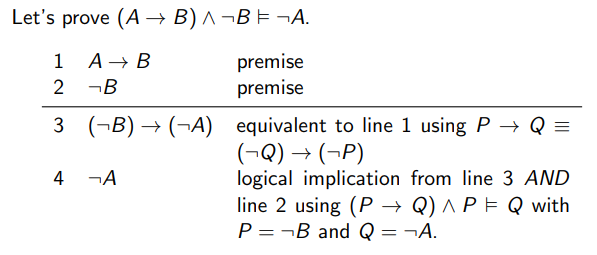Proofs
We can use logical equivalences and logical implications to derive
new true propositions from the given true propositions.
A proof is a list of formulas. The proof starts with some premises, and every other formula on the list must follow the rules of proofs:
- Logically equivalent to the formula above it.
- Logically implied by the formula above it.
- The of some formulas above it.
- Logically implied by the of some formulas above it.
Example
Premises:
- Socrates is mortal or Socrates is not human ().
- Socrates is human ().
We can conclude:
- Socrates is not human or Socrates is mortal (using ). - This is logically equivalent to line 1.
- Socrates is not not human (). - This is logically equivalent to line 2.
- Socrates is mortal (logical implication).
Step 5 is logically implied by the of some formulas above it.
Therefore the of 3 and 4 is . This formula can be found in logical implication - MORE EXAMPLES.
Proofs and Logical Implications
A proof produces a new logical implication where
- is the of all the premises.
- is the last line of the proof.
tip
A proof says that, assuming all the premises are true, the conclusion is also true.
Proof Examples
